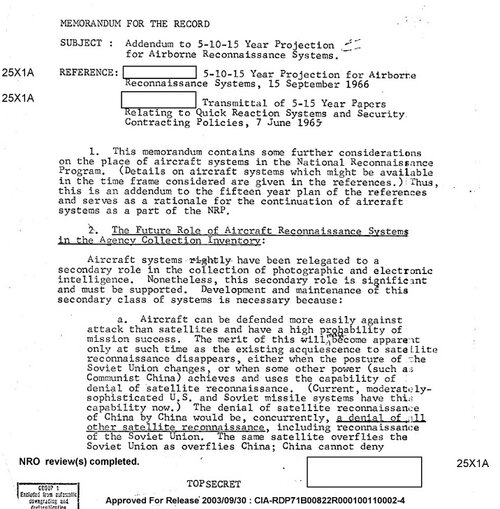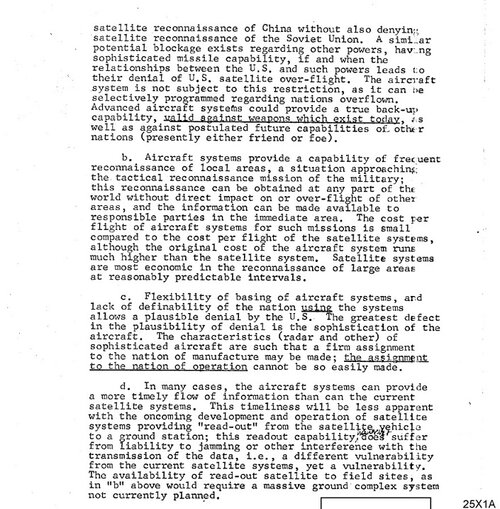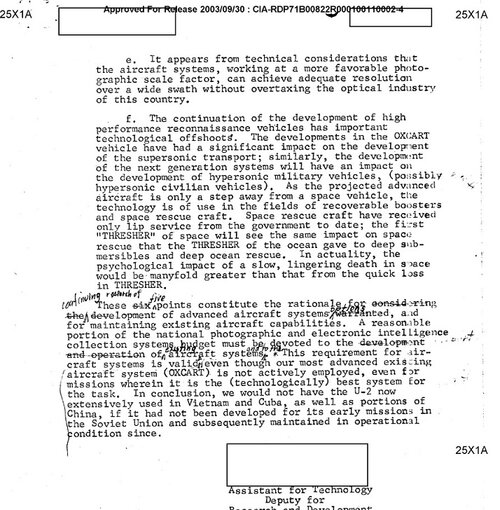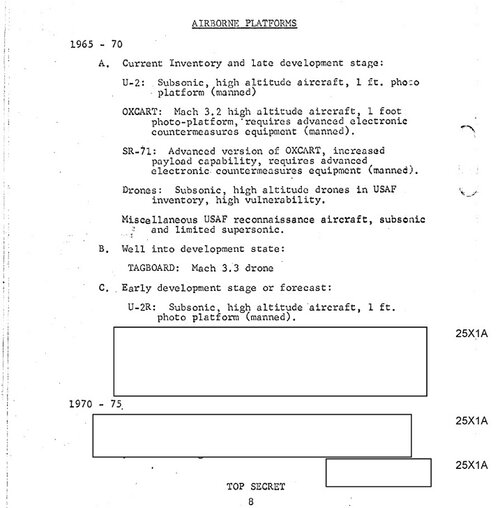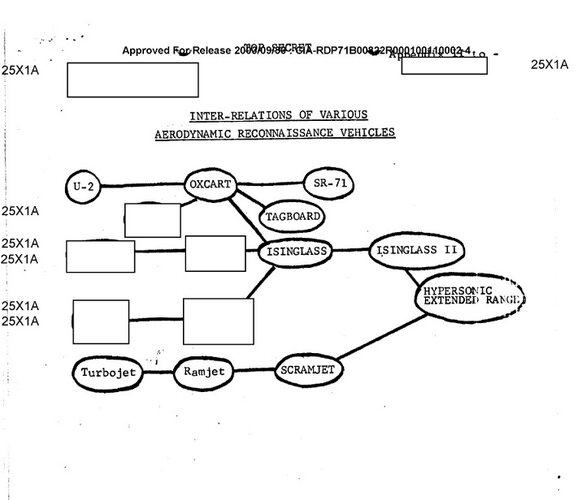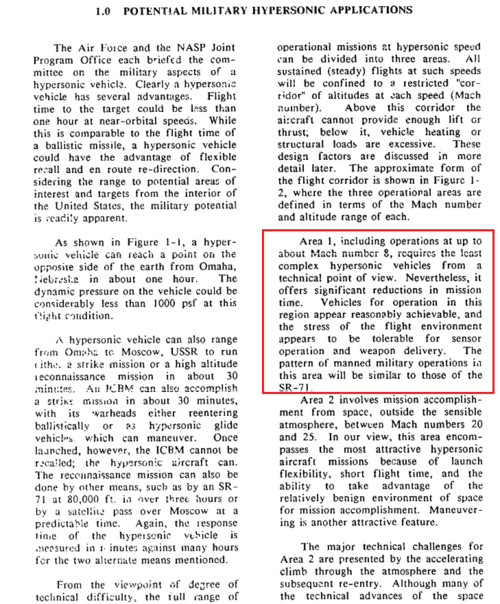There has never surfaced a picture of a classified hypersonic plane, and there has only been one eye witness testimony that is somewhat credible, or at least can not be easily dismissed.
Which eye witness are you referring to here?
"AURORA" was associated with several distinct phenomena reported by a number of observers:
- Triangular aircraft with a diamond shaped lighting pattern, larger than F-117s seen with it (AWST 3/9/92, 10/1/90)
- Pulsing roar sound, sometimes with a sound described as "air rushing through a big tube". (AWST 12/18/89, 10/1/90, 5/11/92)
- Object or point of light (sometimes pulsing) in the sky, often moving unusually fast (AWST 12/18/89, 10/1/90, 5/11/92)
- Contrails or exhaust that were "sausage links" or "donuts on a rope" or "honey dripper", sometimes accompanied by pulsing roar (AWST 12/18/89, 10/1/90, 5/11/92, 7/6/92)
- Sonic booms with no attributable source, which triggered seismic activity (AWST 5/11/92, various others)
What is notable about the above is that the various phenomena were described by different observers very consistently and were often co-occurring. For example, the pulsating point of light with the pulsing roar, etc. The pulsing roar sound is the most consistent phenomena observed.
The pulsing point of light with pulsing roar observations were very consistent. Many different observers described almost exactly the same thing. The only notable differences reported were how the sound was described. Some heard a high pitched sound ("air rushing over / through a big tube") in addition to the pulsing roar.
The early contrail / exhaust observations were also consistent and exclusive to California and Nevada. Almost all of them thought the object creating the trail was at low altitude. After articles on the "donuts on a rope" contrails were published the observations being reported were much less consistent and were geographically more distributed. "Donuts on a rope" contrails were being reported all over the country (AWST 7/6/92).
Contrails that match the descriptions provided by observers are quite common. In Southern California they can be seen almost every day as airliner contrails degrade/deform due to atmospheric effects.
The sonic booms are not notable just because their source was not known. The sonic booms triggered seismic effects which were measured and analyzed - and the booms were also co-occuring with other phenomena. The seismologists were studying how to use seismic effects to track the Space Shuttle (and later SR-71) and happened across the "mystery booms" during their work. They observed the pulsing sound, etc. while tracking the booms (AWST 5/11/92). Mysterious booms on their own are not compelling.
Since the USGS "mystery boom" articles and papers were published there have been 3 different independent analysis of the data: The 2002 paper I linked earlier, a study done by Lincoln Labs for USAF, and a separate study by a sonic boom expert. I have only seen 1 of the 3 studies but I hope to have the others eventually. I am very curious about the Lincoln Labs study as from what I understand conclusions were reached by looking at only 1 incident (rathar than the 5 or more recorded).
While the "triangular aircraft" is interesting and did co-occured with other phenomena, I have learned to take such (visual) observations with a very large grain of salt.
Here I am using AWST articles as reference because they are relatively easy for the reader to find, read, and reach their own conclusions. There were many more reports of these phenomena than were presented in AWST. The majority of the observers that I was able to contact were unaware of the AWST coverage and of the "AURORA" rumors.
I disagree with there being no evidence for the so called RQ-180 in the strongest terms. There are three photo’s of an unknown UAV that fit the description, one of which was taken near contested area’s. While that doesn’t prove there’s an RQ-180 flying around, it definitely shows there is an operational UAV flying around that we don’t know about.
I never said there was "no evidence", I stated that there was more evidence for AURORA than for the RQ-180 at this point, and I do stand by that. The phenomena I listed above are not all of the "evidence" of "AURORA" or any hypersonic aircraft program from that period.
There are 3 photos of aircraft with a flying wing configuration. Unfortunately this configuration is very generic - if you want to make a 4-spike aircraft, it will end up looking like that. The original ATB design, the LM LRS-B concept, Polecat, Tier III, and many others share this configuration. The shape shown in the photos does not tell us much, and there is no real reason to connect it to an "RQ-180". There isn't even a good reason to assume it is a UAV.
AWST has on at least one occasion backed away from some of their claims about the "RQ-180" :
But we do have an RQ-180 thread, and any further discussion etc about that should be held there.


